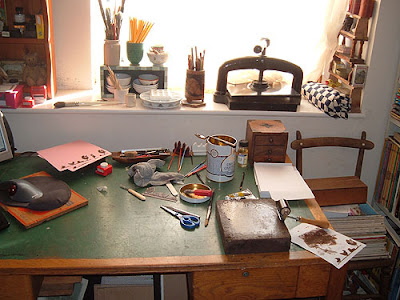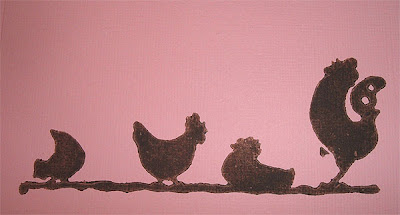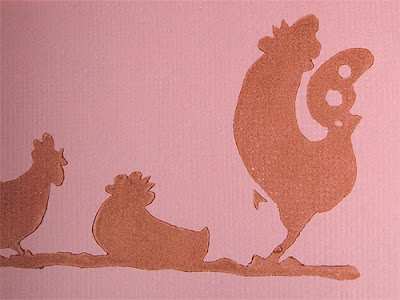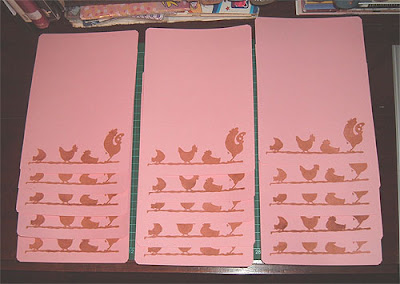Your novel needs to be unique to stand out from the rest.
http://annerallen.blogspot.com/2012/06/hey-james-patterson-stole-my-plot.html
Viewing: Blog Posts Tagged with: plots, Most Recent at Top [Help]
Results 1 - 16 of 16
Blog: Just the Facts, Ma'am (Login to Add to MyJacketFlap)
JacketFlap tags: plots, Add a tag
Blog: Just the Facts, Ma'am (Login to Add to MyJacketFlap)
JacketFlap tags: characters, plots, Add a tag
Do you need to fully know your character in order to plot your book?
http://pcwrede.com/character-based-plotting-not/
Blog: An Awfully Big Blog Adventure (Login to Add to MyJacketFlap)
JacketFlap tags: structure, plots, plotting, planning, character motivation, Heather Dyer, 3 Act, 3-Act structure, changing characters, Mary Caroll Moore, pantsers and plotters, pantsters, w-plot, Add a tag
I’ve always been an awful plotter. I write intuitively, going down dozens of blind alleys before (sometimes) finding my way out into the sun. I’ll admit, though, that once written, my stories do all follow the generally accepted 3-Act story structure.
http://howtoplanwriteanddevelopabook.blogspot.co.uk/
Blog: Original Content (Login to Add to MyJacketFlap)
JacketFlap tags: story, plots, Add a tag
In the spring and summer, I often replace some of my workout time with yard work. Yard work seems to be very conducive to breakout experiences.
I've been thinking about plotting recently, and yesterday I did a little research on the difference between plot vs. story. Many people use those words almost interchangeably, which I don't think is appropriate at all. Plot is part of story. How can it be defined as being the same thing? Character is part of story. Are we also going to define that interchangeably with story, too?
Here is my story definition (to date): Story is an account or retelling of something that happened told in a way that expresses meaning.
Here is my definition of plot: Plot is the action steps used to tell a story, each step having a causal relationship with the ones before and after it.
So here is the breakout thought I had this morning while cleaning up the periwinkle, totally as a result of my researching yesterday: My initial ideas for stories often come in just a scene or other very small element. My huge problems with plotting may come about because I don't yet have a story. Plot is part of story. It supports the story. The story ought to be there first. How can I create a plot, characters, setting, etc., when all I have for a starting off point is an elderly man suggesting to a young boy that he come to his camp with him and his wife and help him set up his computer? (Saving the Planet & Stuff) Or a group of kids, one of them an alien, playing on the lawn in the evening and looking up at the sky because they know a war is being fought on another world? (Becoming Greg and Emma, which hasn't yet sold.)
When I'm getting started struggling with a new writing project, I'm not just struggling because I have no plot. I'm struggling because I haven't yet found the story that a scene or question has suggested to me.
Blog: Original Content (Login to Add to MyJacketFlap)
JacketFlap tags: plots, Add a tag
As luck would have it, I have already stumbled upon The Plot Whisperer, which Jill Corcoran gave a big mention to at her blog recently. I'm slowly making my way through the vlog series. I've only done two, and while I'm not seeing anything revolutionary--yet--the videos are short and on topic and definitely are stimulating my thinking about plotting as a subject, itself.
Blog: Original Content (Login to Add to MyJacketFlap)
JacketFlap tags: YA, Reviewing, plots, Add a tag
I only learned last week that Daniel Handler has written a new book. And here's Katrina Hedeen reviewing Why We Broke Up at The Horn Book. (Another little something I found through Facebook.)
Here is my favorite line--well, bit of a line--of the review: "...the distinctive premise that gives direction to but does not limit plot..."
I love that point that premise can impact plot. I have to find a place to go write that down so I don't forget it.
Blog: So many books, so little time (Login to Add to MyJacketFlap)
JacketFlap tags: writing advice, plots, plotting, Add a tag
You know that saying, "When the student is ready, the teacher will appear"?
I feel like that lately. I have two books I need to plot, and one needs to be written quickly. The other book I could write without an outline by just shoveling more and more trouble in the character's way, but I thought that thinking about the pot first could help.
So I bought this book, Fill-in-the-Blank Plotting - A Guide to Outlining a Novel (Chickhollow Books for Writers) a while ago. It's short, it talks about the three-act structure (to be honest, I have written something like 13 books that are published or nearly published and never used a three-act structure) and about the hero's journey.
In other words, there really wasn't anything new in this book. But you know what? When I was reading it, it clicked. I started having tons of ideas for the two new books. And the plots, I think, will be better for it.
Blog: Original Content (Login to Add to MyJacketFlap)
JacketFlap tags: plots, Add a tag
I don't know if I'd go so far as to say that Character = Plot, but developing character definitely helps a writer to sort of work her way into a plot.
Liz Gallagher at Cynsations.
Blog: Original Content (Login to Add to MyJacketFlap)
JacketFlap tags: plots, Add a tag
Every now and then I make an attempt to do what's known in Writer World as researching markets, though it's probably just an excuse to read instead of write. This explains why I just read an essay called Plotting Against Plot at AGNIonline. The author, Vincent Czyz, finds he "gravitate(s) toward work that’s been praised for its strong language and striking imagery while generally being chided for its weak storyline." He believes, though, that editors and agents prefer manuscripts with "sufficient narrative momentum."
Among the books he says have lingered with him, though he thinks they're weak on plot, are Joseph Conrad's Heart of Darkness and Virginia Woolf's To the Lighthouse. Oddly enough, I remember liking Heart of Darkness when I was in college, but only because of the professor's lectures. And I have to say, not much about the book has lingered with me. From things I've picked up here and there over the years, I've gotten the impression that it's not a wildly popular book with readers. And while I thought at the time I was reading To the Lighthouse that I got it, that I felt it was about regret or acceptance, I also thought Woolf's writing style, which went beyond its weak plot, made readers have to work unnecessarily hard. (On a totally unrelated note, I read it at the same time one of my sons had to read it for high school AP English, and I thought it was a terrible choice for that kind of class. It feels very much like a middle aged person's book.)
While I still prefer books maintain a balance among all their elements, with neither plot nor characterization getting an upper hand, I do find the essayist's point to be interesting.
Also, I noticed that he seems to use "plot" and "story" interchangeably. That's something I've thought about a great deal. I don't think I would do that, though I'm not sure exactly I would differentiate the two.
Blog: Original Content (Login to Add to MyJacketFlap)
JacketFlap tags: plots, Add a tag
Plot School on the Porch from Jeannine Atkins blog.
I would say, myself, that the hard part is remembering everything I've studied and have been trying to train myself to do so that I can then do it. Oh, my gosh...I shouldn't have used "remembering" and "training" in the same sentence. It reminds me of how badly my martial arts class went Wednesday night, which is kind of related in terms of having to remember things and then apply them...and apply them well, not just approximate correct behavior. There is a writing/martial arts metaphor in there somewhere.
The link came from Becky Levine.
Blog: Original Content (Login to Add to MyJacketFlap)
JacketFlap tags: plots, Add a tag
"'The basis of drama is ... is the struggle of the hero towards a specific goal at the end of which he realizes that what kept him from it was, in the lesser drama, civilization and, in the great drama, the discovery of something that he did not set out to discover but which can be seen retrospectively as inevitable.'" David Mamet in Lunch with David Mamet.
Perhaps you've heard that plotting scheme that involves giving a character something to want and then keeping it from her? I've heard it a lot, (and talked about it here frequently, too) and I've decided I don't like it. I don't think it's a method for creating a plot. I think it's more of a formula for a plot. And then there's the question of what character? And what do you give her to want? Where the hell is all that supposed to come from?
I like the idea of characters having goals, because I think it's more dynamic and provides some narrative drive right off the bat. And the quote above from David Mamet struck me, maybe because he used the word "goal." Though I question whether something always has to keep characters from achieving goals. Why can't the move from objective to objective toward the goal be a workable and dramatic plot?
Blog: Original Content (Login to Add to MyJacketFlap)
JacketFlap tags: Conferences, plots, Add a tag
Yesterday's retreat at Whispering Pines was not as retreaty as the one I do each January. There was no snowshoeing, yoga, or reading in front of a window while night falls over a mountain meadow. But I did get lunch and a thirty-minute walk, so I can't complain.
Cynthia Lord was the author/mentor and the reason I went because she was giving a talk on plotting, which is hell on earth for many writers, myself included. Now, Cynthia Lord has only written three books, and two of them are just coming out this year. Yet she's a very popular speaker at both schools and literary events. Some jaded types might say that happens when your one novel is a Newbery Honor book. I think it's more likely due to the fact that she is a very fine speaker. She was remarkable with both content and presentation. She also made the best use of PowerPoint of anyone I've ever seen. I'm talking both in terms of slides supporting content and ability to use the program.
Now the group critique I took part in during the afternoon was very interesting for a couple of reasons. First, I have to say that the material I heard yesterday was much better than I expected. I was a member of a writers' group for a few years earlier in this decade. That group was made up primarily of unpublished writers, which I suspect was the case yesterday, too. The quality of what I was hearing yesterday was better than what I often heard in my old group. I don't know if this was because there are many more options for beginning writers to learn craft now and I'd see that in any group critique situation or if these were all SCBWI members and, as such, were more likely to avail themselves of such opportunities. Second, these people were also very sophisticated readers and could express themselves confidently. (Probably more so than I did.) I know that at least three of the people there were members of writers' groups and were experienced at giving feedback.
As a result of the discussion of my offering--a few pages from the 365 Story Project--I am going to make some significant changes on Day One, which shouldn't be too difficult to do. I'm also going to change the name from Middle Ridge Road to A Year on Middle Ridge Road. So it was a productive day for me.
Blog: Original Content (Login to Add to MyJacketFlap)
JacketFlap tags: writing process, plots, Add a tag
Strong Writers Do This at Writer's First Aid could have had my name on it. In it Kristi Holl talks about self-study programs, an idea she says comes from a book called The Art of War for Writers. I've done self-study programs in the past, and I can totally get behind the idea of writers as warriors.
In the comments to this blog post, someone talks about creating scene cards for novels you're reading, not writing. I've read about that. It's supposed to help writers develop a sense of how plots work. (Hmmm. A little muscle memory for plot, since we were talking about warriors in the last para?) I was going to do it a while back. I was going to use a notebook, had it next to my bed so I could make scene notes while I read. And that's as far as I got with that particular self-study program.
Hmmm. Maybe I'll try doing this particular self-study program here at Original Content. I could try working out the plot points in some books I'm reading, trying to develop some plotting muscle memory.
I found Writer's First Aid by way of Cynsations.
Blog: BookEnds, LLC - A Literary Agency (Login to Add to MyJacketFlap)
JacketFlap tags: classics, characters, plots, Add a tag
My YA manuscript is loosely based on a classic Charlotte Bronte novel, and although some of the characters and plot lines are similar to the original, the characters' motivations and relationships have been updated to reflect modern values, choices and issues. I believe my novel and query letter are both good enough to stand on their own, but I was wondering if it would be an advantage or disadvantage to mention that it's loosely based on a classic. Right now, I mention it in a short sentence at the end of the query, but do I really need to include it?
While I caution writers against relying too heavily on comparing their books to modern literature, I don’t think in this age of “let’s remix Jane Austin just one more time” you can hurt yourself by letting agents and editors know that you are basing your book on a classic. This might be a personal bias because I’m always intrigued by books that either tell the story of a classic secondary fictional character or retell a classic or a fairy tale, but I say go for it, and I say move that line up to the beginning of your letter. Who wouldn’t want to read a really great, modern retelling of Jane Eyre (in fact, I feel inspired to read the original right now) or Wuthering Heights (yes, I know that was written by Emily)?
Jessica
Blog: BookEnds, LLC - A Literary Agency (Login to Add to MyJacketFlap)
JacketFlap tags: characters, revisions, plots, inspirations, inspirations, plots, Add a tag
It’s so hard being “almost there” with a story. You love your work, you’re getting positive rejections, so what does it take to sell? For me, it was all about making the story bigger. And, I know, you’re saying you’ve heard it before. So did I. But I didn’t know what it meant. I had to push my writing to a level I had never gone to before, but I found three things were the key:
The “No Way” Factor
My characters had to take bigger chances, have more to risk and lose. It’s easy to say, but a hard thing for a writer to do. It’s a vulnerable, risky place to be. I knew my story was big enough to sell when instead of ending my writing sessions thinking, “I hope that’s good enough to impress an editor,” I ended them thinking, “No. I did not just write that. I did not just make my character defend herself with a toilet brush and a can of Purple Prairie Clover air freshener.”
The “Brainstorm” Factor
The first thing you think of might be good, but chances are the twentieth thing will be even better. When I was trying to think of a hidden hideout for my biker witch characters, the first idea that popped into my head was an abandoned biker bar. Kind of neat, right? Instead of going with it, I sat down and brainstormed twenty ideas. The first five or so come easy. The rest really make you stretch and think. One of those twenty ideas became a fun, quirky hideout for my witches – an abandoned riverboat that they’d enchanted years earlier (while drunk on dandelion wine). Now they not only need a safe place, but they need to catch the Choking spells, Lose Your Keys spells, not to mention the Frozen Underwear spells ready to attack from around corners and behind the old jukebox.
The “Surprise” Factor
Follow your story in new directions, because if you’re enjoying the surprise, chances are your readers will too. When I sat down to write my book, I had no notes about a sidekick for my heroine. But in the second chapter, when she’d learned she was a demon slayer and all hell was after her, she took comfort in her dog. As I was writing, I thought, "This is a sweet moment. Now how do I throw her off?" Simple. I made the dog say something to her. Nothing big. After all, he’s only after the fettuccine from last week. And he knows exactly where my heroine can find it (back of the fridge, to the left of the lettuce crisper, behind the mustard). It amused me, so I did it. Thanks to her unholy powers, my heroine can now understand her smart-mouthed Jack Russell Terrier. I had fun with it. In fact, I suspect Pirate the dog is my editor’s favorite character. I wouldn’t have been at all surprised if Pirate helped talk my editor into buying The Accidental Demon Slayer.
I suppose what I’m trying to say is – make your writing an adventure. Don’t be afraid to step out, take risks and push your story to the next level.
Angie Fox is the author of The Accidental Demon Slayer, coming from Dorchester this summer. Visit her at www.angiefox.com.
Blog: Middle of Nowhere (Login to Add to MyJacketFlap)
JacketFlap tags: chickens, five favourite blogs, ink problems, chicken stationary, border tart, lino printing, Add a tag


This is how the water based inks performed...not so good.

Unfortunately, my first attempts with the new medium didn't give significantly better results at first. The (large amount) of lino I bought last year isn't 'how it used to be in the good old days'. I did check; I've got some old plates filed away, and the surface is sumptuously dense and ink saturated. The new stuff is greasy and the shiny surface pushed the ink about. I consulted Andy. He was a whizzo printer in our college days - he still is when he puts his mind to it, but that is another story. Firstly he told me my ink was too thick and then that the medium didn't work. I was determined to make it work as I can't afford to spend any more money. And as I was tidying up the edges of the design, a vague memory of 'sandpaper' crept into my troubled mind. Whizzo printer didn't think it would work - but it did! Gently sanding the surface gave the lino 'teeth' and the ink a purchase, enabling it to soak into the plate. With that, and spritzing the card, then blotting it in an old magazine, I was away. The studio started smelling nostalgically like a print room, even with the window open (remember kids, always print in a well ventilated area). There's still a lot of work and experimentation to be done, but I think I'm getting there. Better had be, I need to earn some pennies!

There is nothing like seeing repeated images Andy Warhol style. That's one of the things I love about printing.

1) The newest kid on the block is Children Chocolate and Wine. There's a long story behind this, involving the ill fated Country Living 'find a new columnist' contest - but on this barely fledged central hub-blog you'll find a plethora of new bloggers, all writing wonderfully, mostly about Real Country Life - in which very little Cath Kidston features. Many of them have never had a 'proper' blog before, but you wouldn't know it. So please extend the big bloggy hand of friendship to them and make them feel welcome.
2) Ramblings of a Cotswold Gent. Very funny and often mustard sharp. One of those rare blogs which can perform on writing alone. Also the only other blog I'm aware of in our area and it's nice to know someone local.
3) Remember I'm the Bloody Architect. Supreme, witty writing, always makes me smile - does the wondrous thing of making architecture entertaining...it's the way she tells it.
4) Hannah's Country Kitchen OK, listing this means I have to divulge our new status of TV owners (yes, yes, I'll confess all another time). We got hooked on Masterchef. I was thrilled to find that the lovely Hannah, one of the finalists, has her own blog, where she shows her mind-blowingly beautiful cakes and shares her recipes. This is one of the blogs you go to for time out and niceness.
5) Oh dear, only one left...hmm...ok, quilt and patchwork heaven...Feeling Simply Quilty. Gorgeous. Simply gorgeous.
Ah yes. I hooked my web cam up. It's on when I'm in the studio, (UK time) and I put my open/shut sign up as necessary. Not that seeing my grizzled head bent over artwork is at all interesting, but it gets me to work in the morning.
EDIT - Blogger turned the comments box off! Thanks to Penny for alerting me...






I'm all for a martial arts metaphor. I don't know much about it, but I think you've hit on wanting that body memory of moves. If only we could just feel plot through our hands: holding fingers away from the keyboard when there's an essential hole to be filled later, hitting the return key to make a paragraph instead of explaining something that should wait.
It's all so hard. And I think you hit on something in your next entry. When we have lots of patience and adoration for work that's not so plotted, it may be even harder to create something that editors will recognize as narrative drive.
Oh, I wasn't even thinking of muscle memory. Very good.